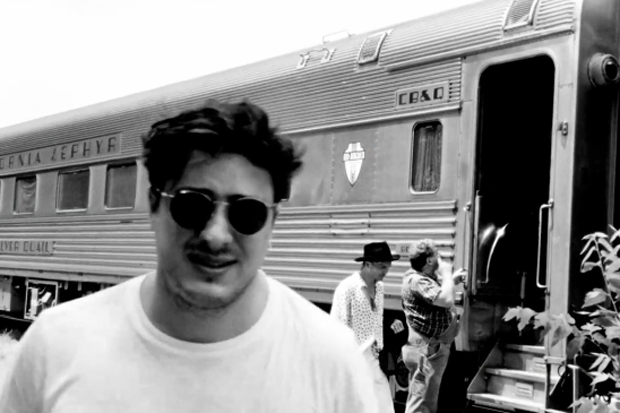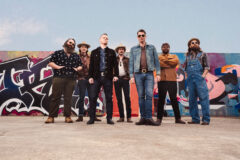The documentary Big Easy Express is equal parts The Real World and O Brother, the true story of 130 people, picked to live on a train and play indie-folk at rail stations from Oakland to New Orleans. It focuses on about 30 of those people: the members of British troubadours Mumford & Sons, Nashville old-timey bluegrass experts Old Crow Medicine Show and twangy L.A. indie rockers Edward Sharpe and the Magnetic Zeros, who all participated on the 2011 Railroad Revival Tour. Other than similar music styles, these artists all share an overwhelming sense of sincerity, allowing this film — which will be available on iTunes next week and on Blu-ray July 24 — to capture real-life breakthroughs as the groups click-clack along, playing their prewar-style musical revues.
As Mumford member Ted Dwane tells it, the idea for the tour came from an Edward Sharpe member watching Festival Express, a film documenting a 1970 train tour featuring the Grateful Dead, Janis Joplin and the Band. Thinking it looked like fun, the groups united and soon began emulating the original flick’s hippie free will. They retreat into fields to play their songs. They begin jamming on the train as soon as they finish playing their concerts, drinking whisky until 5 a.m. (Dig the late-night take on Herbie Hancock’s “Cantaloupe Island.”) And they work together to find ways to collaborate onstage, too, which they do when they rave up Woody Guthrie’s “This Train Is Bound for Glory.”
The concerts themselves look just as unruly. Edward Sharpe and the Magnetic Zeroes come off like free-love demonstrators, as Jesus-like frontman Alex Ebert sways barefoot, his sheet-like shirt flapping in the wind with each climbing note of “Up From Below.” Later, Mumford & Sons come up with an equally transcendent moment after they draft a high-school marching band in Austin, Texas, to join them on their hit “The Cave.” The students look overwhelmed when they finish the song in front of what appears to be 10s of thousands of onlookers, and one confident boy points into the crowd and gesticulates “call me.” And last, but not least, Old Crow Medicine Show, with their Colonel Sanders hats, white suits and wild fiddling, almost come off as period re-enactors. (At one point, singer Marcus Mumford credits tourmates Old Crow Medicine Show with being the first to turn him on to country music about a decade ago, when he was 16.) When the three groups squeeze together onstage at the end for the Guthrie tune, any last shred of self-containment falls by the wayside, as they take one solo break after another, for guitar, bass, and even banjo — of which there are four players, each who has the ZZ Top tandem guitar sway down pat. If anything, it seems the musicians found a camaraderie with one another that doesn’t always happen on big tours.
“It’s no big deal,” Ebert says early in the movie. “We’re just playing music on the train through the country.” He then clarifies that he’s not just shrugging of its significance of the journey. What means as much to him as the concerts is that he’s able to take in scenery “the way people [once] saw the world,” along the way. And this idea captures exactly what makes this film special. Where other, older countries have castles and millennia-old manmade landmarks, the America’s history, from the Native Americans to the ’49ers, lies in its countryside, which ends up being the film’s uncredited costar. (It’s vastness is astonishing when the train stops, such as the time Texas cops pull it over because a fan tried to jump aboard.) The entire thing becomes a unique portrait of nostalgia and tradition — even if it’s taking place on a pretty modern-looking train.





